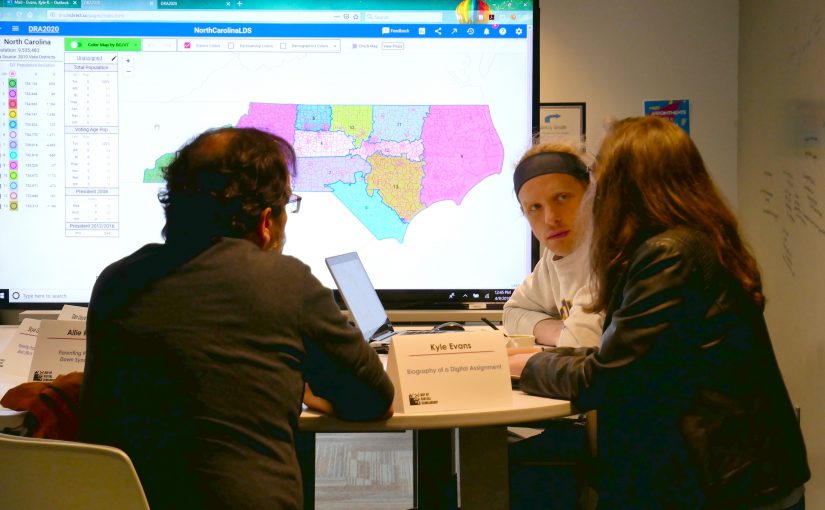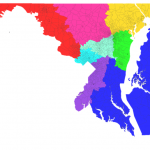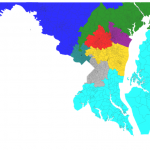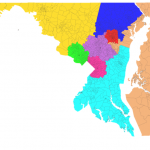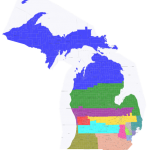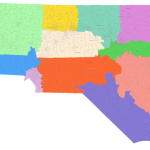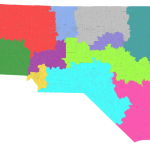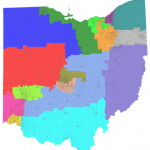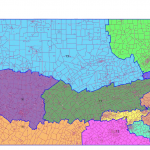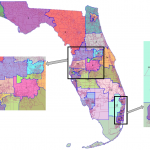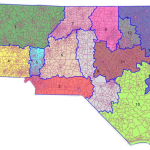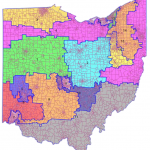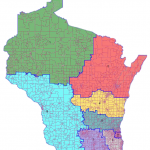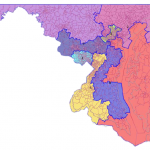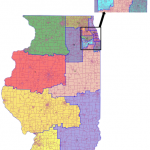As the mathematics research community continues to be heavily involved with “solving” the problem of redistricting and gerrymandering, I have continued to feature this topic in the classroom as a prime example of the relationship between mathematics, politics, and social justice.
In the Spring 2018 semester (at the University of Connecticut), myself and Dr. Adam Giambrone wanted to add authenticity to our “gen ed” math course and quickly decided that covering gerrymandering was a great opportunity to do so. We decided to run the “unit” as an extended group project, focusing on simulating maps with grids, the analysis of generated maps, legal and social justice components of racial and partisan gerrymandering, and the mathematical and social interpretations of the efficiency gap; all with one theme that tied the project together: “fairness.”
What makes a district map “fair”? How much should mathematics or algorithms dictate or contextualize our maps? What about policies or living patterns that have led to partisan gerrymandering? Or social factors and court cases that have led to racial gerrymandering? And given these varied types of information, what do students gravitate to in order to make decisions? (Note: This is an ongoing research project, more to come).
In the Fall 2018 semester (now at Trinity College in Hartford, CT), I was able to “rebrand” one of our “liberal arts” math courses into “Math and Politics” with Redistricting as one of the core topics of the course (along with Voting Theory, Apportionment Theory, and Game Theory). In this iteration, I constructed course notes that focused on strategies and principles of gerrymandering, the efficiency gap, and various compactness tests. I also supplemented the notes with videos and readings on the types of gerrymandering, including a writing assignment on “Prison Gerrymandering” in Connecticut.
Students then integrated this information to complete a group project in which they acted as a “Redistricting Commission” to create and propose (in a written report) a new congressional district map for a particular state. The maps were created using Dave’s Redistricting and the proposed student maps can be seen below:
In Spring 2019 I was able to teach “Math and Politics” for a second time, and although I made some thoughtful changes to the course and the Redistricting unit, the core of the content and project remained similar and the proposed student maps can be seen below:
In addition to teaching “Math and Politics” for a third time in Fall 2019, I am also excited to be offering a new course on “Mathematics and Redistricting” this semester. Check back for updates on the work done in this course!
Resources:
- Course Notes on Redistricting (Spring 2019)
- Redistricting Group Project (Spring 2019)
- Prison Gerrymandering Writing Assignment (Spring 2019)
- Slides from MAA Talk (June 2019)

